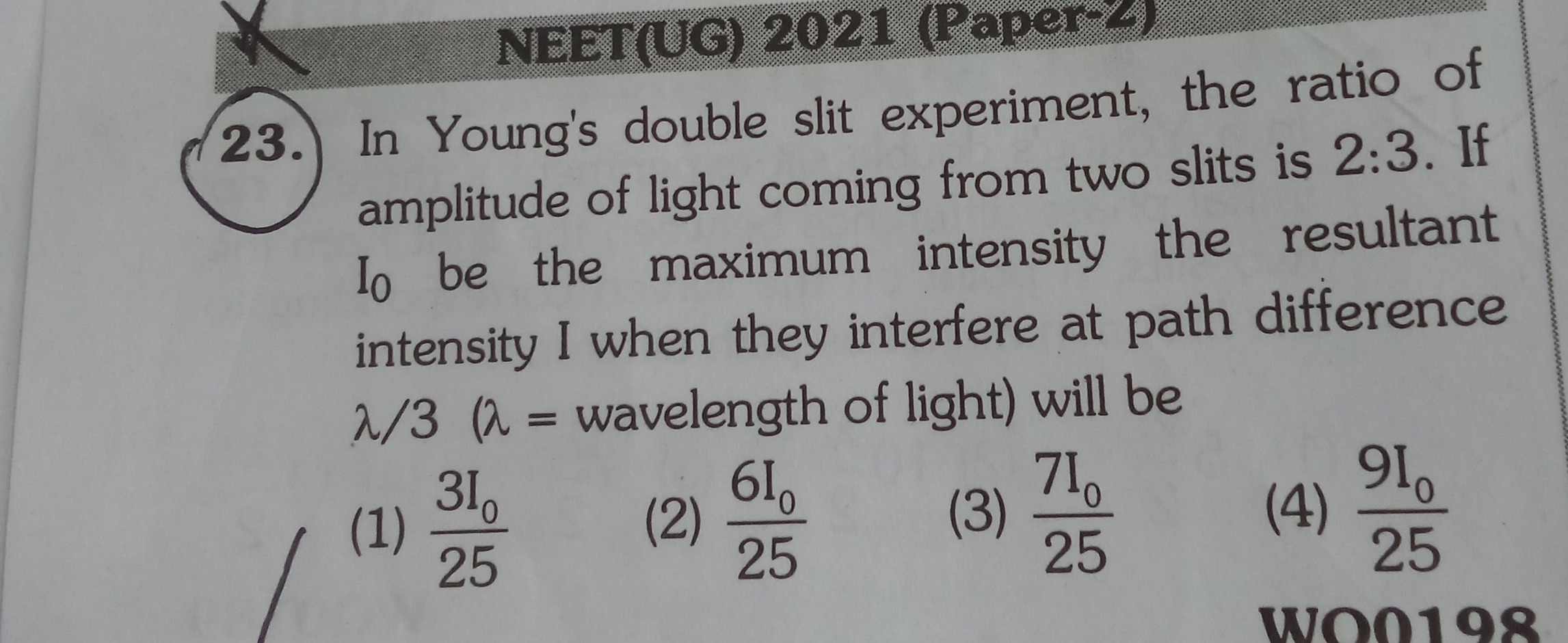Question
Question: In Young's double slit experiment, the ratio of amplitude of light coming from two slits is 2:3. If ...
In Young's double slit experiment, the ratio of amplitude of light coming from two slits is 2:3. If I₀ be the maximum intensity the resultant intensity I when they interfere at path difference λ/3 (λ = wavelength of light) will be

253I0
256I0
257I0
259I0
257I0
Solution
Let the amplitudes of light coming from the two slits be A1 and A2. Given the ratio of amplitudes is A1:A2=2:3. Let A1=2a and A2=3a for some constant a.
The intensity of light is proportional to the square of its amplitude (I∝A2). The maximum intensity (I0) occurs when the waves interfere constructively. The resultant amplitude for constructive interference is Amax=A1+A2. Amax=2a+3a=5a. The maximum intensity I0 is proportional to Amax2: I0∝(5a)2=25a2. Let I0=K(25a2) for some proportionality constant K.
The path difference is given as Δx=3λ. The phase difference ϕ is related to the path difference by the formula: ϕ=λ2πΔx Substituting the given path difference: ϕ=λ2π(3λ)=32π.
The resultant amplitude A when two waves with amplitudes A1, A2 and phase difference ϕ interfere is given by: A2=A12+A22+2A1A2cosϕ Substituting the values A1=2a, A2=3a, and ϕ=32π: A2=(2a)2+(3a)2+2(2a)(3a)cos(32π) A2=4a2+9a2+12a2cos(32π) Since cos(32π)=−21: A2=4a2+9a2+12a2(−21) A2=13a2−6a2 A2=7a2.
The resultant intensity I is proportional to A2: I∝7a2. So, I=K(7a2).
We need to express I in terms of I0. We have I0=K(25a2). From this, we can write Ka2=25I0. Substituting this into the expression for I: I=7(Ka2)=7(25I0)=257I0.
